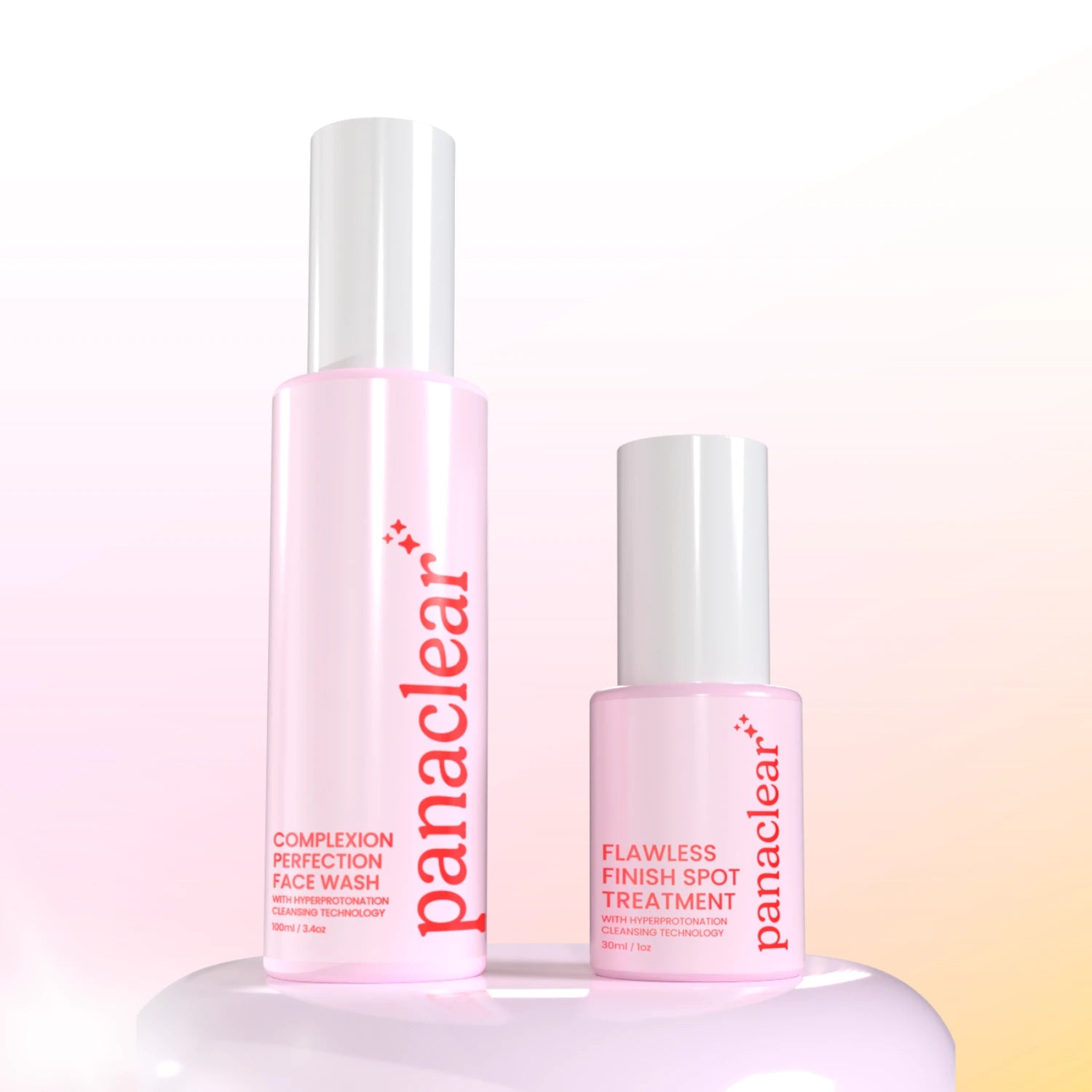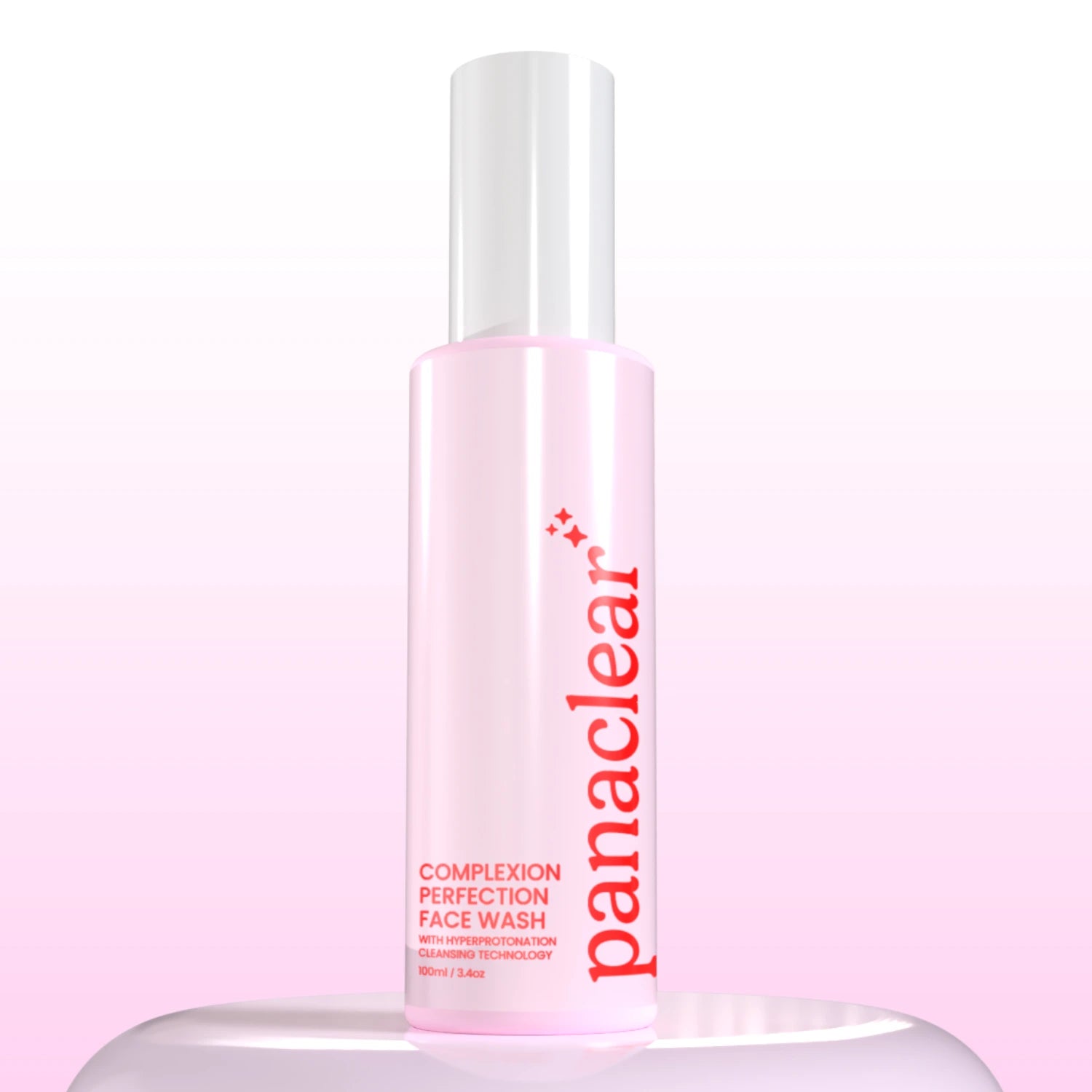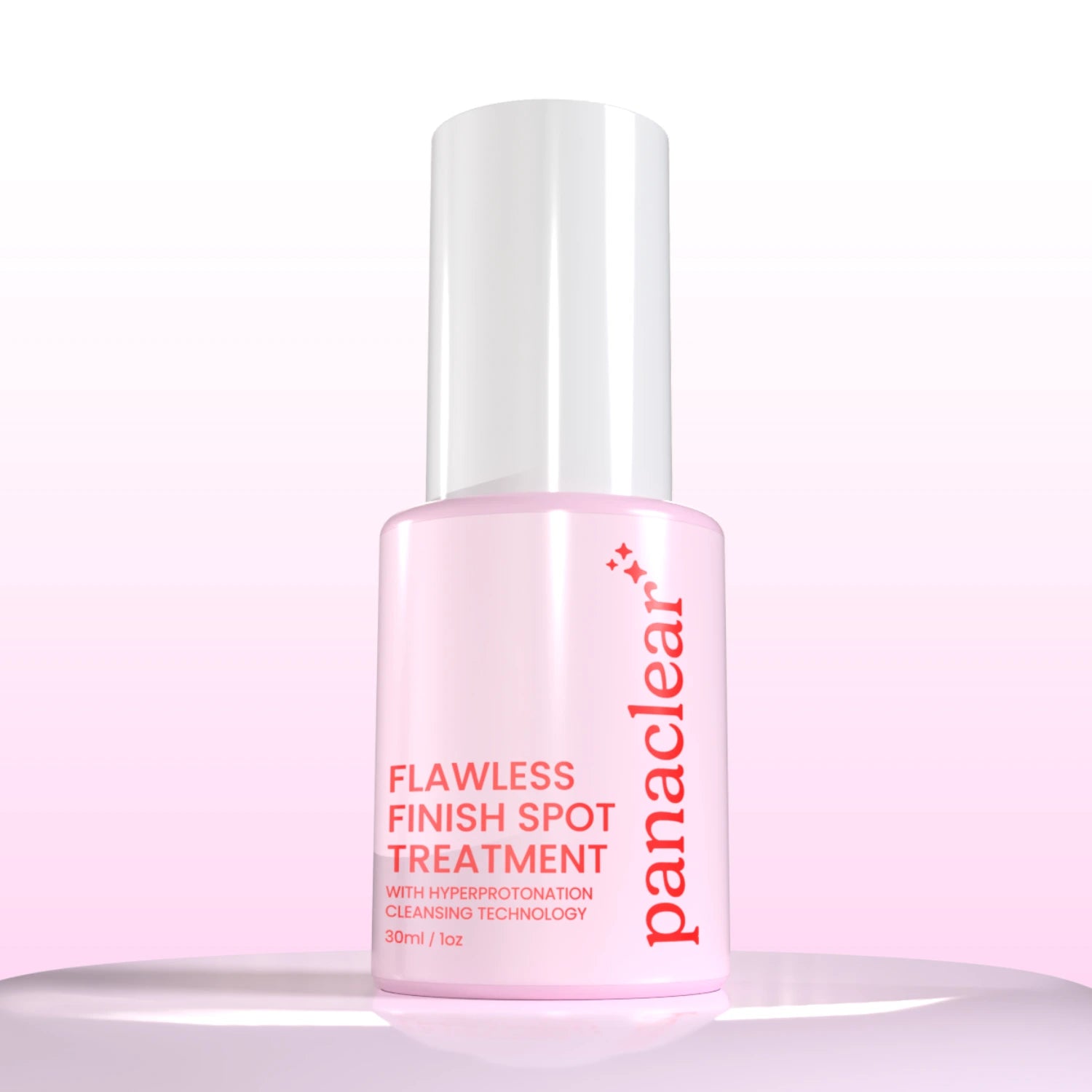Background: The Biofilm Problem.
Extensive research has shown that in the real world standard cleaners and disinfectants are actually not effective. This is because bacteria and viruses do not exist in isolation – as tested in laboratories – but are encased in protective materials known as “extracellular polymeric substances” (EPS) and/or lipopolysaccharides (LPS), which, when combined, are known as biofilms.
Biofilms are produced by approximately 80-90% of microorganisms, but have not been acknowledged by the skincare industry as a problem that massively decreases the effectiveness of traditional skin cleansing products.
When typical cleansers are applied to biofilms on the skin, significant portions of the bacterial colonies inside are protected by EPS which allows them to survive and reproduce rapidly after application.
Laboratory tests have shown products claiming “99.9%” in isolated lab tests actually kill less than 30% in the presence of biofilm. Thus, the claim of “killing 99.9%” of microorganisms is wrong and misleading in real world environments. Consumers who believe they are using extremely effective cleansers are in actuality are leaving behind substantial amounts of bacteria.
We have reached important new scientific understandings regarding biofilm cleansing, leading to the invention of a breakthrough technology: the first non-toxic cleansing process that has been shown to defeat biofilms in their entirety.

Current Skincare Solutions Are Ineffective Against Acne Causing Bacteria Because They Don't Target Biofilm.
As previously stated, biofilms are a significant problem in skincare because almost all of the bacteria on our skin lives within them and they make typically easy-to-target bacteria resistant to eradication through various methods, including:
-
Communicate with each other through chemical signals, a process called quorum sensing
-
Share resources and genetic material, including resistance genes
-
Adapt almost instantly to changes in their environment to help minimise the impact of chemical attacks
In current acne research, scientists have discovered that the bacteria Cutibacterium acnes (formerly Propionibacterium acnes) can forms biofilms on the skin and inside our hair follicles. Also known as C. acnes, this bacteria is found on the surface of everyone’s skin - but it is also the bacterium most widely associated with the appearance of acne and blemishes.
Studies measuring the amount of C. acnes on the skin of individuals with acne and “normal” skin have also revealed that skin with acne harbours more of the strains of C. acnes known for high levels of resistance and biofilm formation. C. acnes is found on everyone’s skin, but the skin of those with acne is found to have high amounts of biofilm forming strains - about 2.5x as much as on those with 'normal' skin. This further supports the conclusion that it’s the appearance of biofilm forming bacteria - not bacteria alone - that contributes to the appearance of acne (or else we would probably all struggle with the appearance of acne everywhere, all the time!).

Relative P. acnes strain abundance is different between those experiencing acne and 'normal' individuals. A) 'Normal' skin: balanced mix of bacterial ribotypes. B) Acne: dysbiosis with a decrease in strains RT3/RT6 and increase in strains RT4/RT5/RT7/RT8/RT9/RT10. C) Persistence from biofilm-forming C. acnes pockets on the skin surface, within the follicle, sebaceous gland, and pore explain resistance and proliferation. From: https://doi.org/10.1038/s41522-016-0004-z
Unfortunately, as previously mentioned, current cleansers and skincare solutions are unable to effectively address the problem of biofilm. Most traditional cleansers relying on ingredients like benzoyl peroxide, salicylic acid, and other harsh chemicals have their efficacy measured by their ability to kill planktonic, or 'free floating', bacteria which isn’t encapsulated in a biofilm matrix.
Studies measuring the effectiveness of the most popular chemicals in skincare, including benzoyl peroxide, salicylic acid, and clindamycin have found that while they are markedly effective at killing planktonic bacteria, none of these ingredients are as effective at eradicating biofilm cultures. Solutions like 2.5% and 5% benzoyl peroxide have even been found to be 'biologically ineffective' in the presence of biofilms, meaning they did not make a big enough reduction in the bacterial population to be considered effective at all.

C. acnes biofilms exposed to common anti-acne cleansing chemicals show poor overall eradication. Panel A measures how much biofilm mass remains after treatment (lower bars indicate better biofilm removal), while panel B shows bacterial survival (lower bars indicate stronger killing). Several agents, such as 30 mM azelaic acid, effectively killed bacteria, but left most of the biofilm structure intact. Others, like 0.5% erythromycin, reduced the visible biofilm, yet left many bacteria alive. The most potent killing occurred with 0.1% triclosan and 5% benzoyl peroxide (BPO) combined with either erythromycin or clindamycin, though even these treatments failed to remove the biofilm completely. These results demonstrate that successful cleansing requires both disruption of the biofilm matrix and eradication of the sessile bacteria: a combination none of the tested agents achieved. From: https://doi.org/10.1016/j.resmic.2007.02.001
This is precisely why so many skincare products seem to fall short, often working only for some time or - even worse - not at all. Solutions claiming to be effective against bacteria may be effective in the lab where bacteria are isolated and easily penetrable, however they are no match for the complex, resistant biofilms found in the real world.
A Breakthrough In Skincare: Hyperprotonation Cleansing Technology
Hyperprotonation is the patented cleansing technology that is changing the way we approach cleansing. It works by strategically lowering the pH of a biofilm and then flooding the system with excess protons (H⁺ ions). This proton-rich environment works by:
Destabilizing the EPS layer which acts as the protective “gel” - making it easier for our cleansing agents to break inside the biofilm matrix.
By weakening the protective EPS barrier and increasing transport pathways, our cleansing agents can penetrate deeper and cleanse effectively.
Laboratory Testing and Statistical Evidence Supporting Hyperprotonation
Evaluation of Hyperprotonation Solution on Bacteria in Vitro
Hyperprotonation solution was evaluated for hospital-grade disinfectant efficacy under Therapeutic Goods Order No. 54 (Schedule 1) and the Kelsey & Maurer (1978) method.
Testing was conducted with neat (undiluted) solution against four bacterial species:
-
Escherichia coli (NCTC 8196)
-
Pseudomonas aeruginosa (NCTC 6749)
-
Staphylococcus aureus (NCTC 4163)
-
Proteus vulgaris (NCTC 4635)
Each organism was tested under both “clean” (sterile hard water) and “dirty” (yeast suspension simulating organic soil) conditions. The composition was challenged with a bacterial inoculum, sampled after 8 minutes, rechallenged, and resampled after 18 minutes. Following incubation for 48 hours at 37 °C, growth in recovery broths was assessed to determine efficacy.
Strict controls verified:
-
Culture viability and purity
-
Medium and formulation sterility
-
Complete neutralization of residual disinfectant activity
-
Correct inoculum concentration (2 × 10⁸ – 2 × 10⁹ CFU/ml)
The test was repeated across three valid independent assays per organism and condition.
Results
Excerpt from results of hyperprotonation solution laboratory testing.
Conclusion
Hyperprotonation solution achieved complete efficacy against all tested organisms under both clean and dirty conditions.
Evaluation of Hyperprotonation Solution on Biofilm Cultures
A microbial challenge study was conducted to evaluate the biofilm-disrupting and antimicrobial efficacy of hyperprotonation solution against mature bacterial biofilms. The test assessed effectiveness at contact times of 30 seconds, 1 minute, 5 minutes, and 10 minutes.
Testing was conducted against the following three bacterial species:
-
Escherichia coli
-
Staphylococcus aureus
-
Salmonella spp.
Biofilm Formation:
-
Biofilms were grown on borosilicate glass disks (coupons) inside a CDC biofilm reactor.
-
Cultures were incubated under controlled nutrient flow for ~48 hours (24 hr batch + 24 hr continuous flow) to develop mature, adherent biofilms.
Treatment Procedure:
-
Biofilm-covered disks were exposed to the hyperprotonation solution for 30 sec, 1 min, 5 min, and 10 min at room temperature.
-
After treatment, disks were neutralized in Dey–Engley broth (DEB) to stop antimicrobial activity.
-
Remaining viable organisms were released by sonication (20 min), serially diluted, and cultured on TSA for enumeration after 3–5 days.
Validation Controls:
Results
| Organism |
30 sec |
1 min |
5 min |
10 min |
| E. coli |
8.6 × 10³ CFU |
9.6 × 10² CFU |
0 CFU |
0 CFU |
| Salmonella spp. |
1.2 × 10⁴ CFU |
2.9 × 10³ CFU |
0 CFU |
0 CFU |
| S. aureus |
2.9 × 10⁴ CFU |
1.5 × 10³ CFU |
0 CFU |
0 CFU |

Control (untreated biofilms):
At 30 seconds, biofilm bacterial counts were reduced by roughly 1–2 log units, indicating early disruption of the biofilm matrix.
By 1 minute, viable counts dropped by approximately 3 logs.
By 5 minutes, no recoverable organisms were detected for any species, maintained through 10 minutes.
Conclusion
Hyperprotonation solution demonstrated rapid and complete efficacy against biofilms.
Conclusion
For decades, the skincare industry has focused on surface-level cleansing while overlooking the far more biologically significant structure of biofilms. The evidence presented here makes clear that this oversight has left a critical gap in the consumer understanding of effective cleansing.
Biofilms protect bacterial communities through a dense extracellular matrix that renders conventional antibacterial agents and cleansers largely ineffective. This is why products that promise “99.9% kill” in sterile laboratory settings fail to deliver comparable real-world results on skin where bacteria exist not in isolation, but in the fortified microenvironments of biofilms.
The introduction of hyperprotonation technology marks a pivotal advancement in this field. By precisely manipulating pH and introducing an excess of protons, hyperprotonation destabilizes the biofilm’s protective EPS barrier, allowing active cleansing agents to achieve a superior clean.
By addressing the biofilm problem directly, hyperprotonation technology offers the first scientifically validated, non-toxic method to achieve true biofilm-level cleansing, setting a new standard for cleansers.








